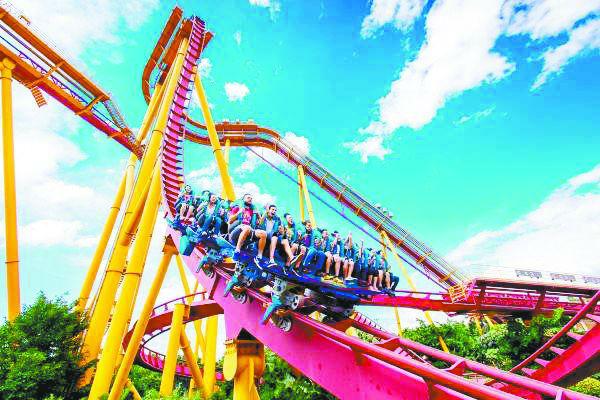(单词翻译:单击)
2016 has seen theme park industry in China grow in leaps and bounds, with Disneyland launching an outlet in Shanghai, and domestic brands such as Happy Valley and Fantawild Adventure expanding across into new regions.
2016年,我国主题公园行业呈爆炸式增长,迪士尼在上海开设乐园,欢乐谷和方特欢乐世界等国内品牌也向新区域进行扩张。
However, of the 2,700 theme parks in the country, only 10% are making profits, according to the 2016 report on Chinese theme parks. 70% are said to be in the red, with the rest at break-even point.
但《2016中国主题公园发展报告》显示,全国2700家主题公园中,仅10%实现盈利。据称70%的主题公园处于亏损状态,其余的则处于收支平衡。
Dai Bin, president of China Tourism Academy, says most indigenous Chinese theme parks are unable to meet public demand in design, operation and maintenance, and are in particular lacking cultural creativity.
中国旅游研究院院长戴斌表示,大部分本土主题公园在设计、运营、维护等方面均不能满足公众需求,尤其缺乏文化创意。

"Theme parks in the past were no more than a landscape show. Now they have become amusement parks as the second generation, which still don't have an attractive theme and a story or logic thread to link up all elements. Theme parks don't mean you display a dinosaur statue or a Ultraman. They should be alive and interactive with visitors. People come to pursue inner values and feelings," said Dai.
戴斌说道:“过去的主题公园,往往是以景物展示为主。到第二代产品,往往是一个游乐场的结合体,缺少一些有吸引力的主题、有吸引力的故事线、逻辑线把它串起来。不是简单的放一个恐龙的造型,放一个奥特曼的造型就是主题公园了,是让你过来以后,为了某一种情感和价值追求来到这里。园区好像是一个有生命的空间一样,我可以跟他进行有机的互动。”
Industry experts observe that many theme parks mainly rely on ticket sales for their profit, providing a flimsy business, and leaving little left over to invest in new recreational facilities to attract repeat visitors.
业内专家称,不少主题公园业务薄弱,收入主要依靠门票销售,没有足够资金来投资建设新的娱乐设施,从而吸引回头客。
Business insiders have called for the authorities to stop granting licenses for new parks for the sake of the industry.
业内人士已经呼吁,为了整个行业着想,希望有关部门不再批准新主题公园项目。
The theme park report says 64 new parks were expected to be established between 2015 to 2020, with a total investment of about $24 billion.
不过根据主题公园相关报告,在2015年至2020年,国内预计还将增加64个主题公园,总投资额将达到240亿美元。


